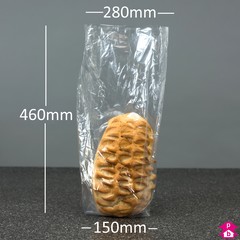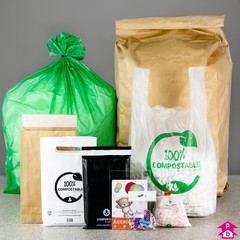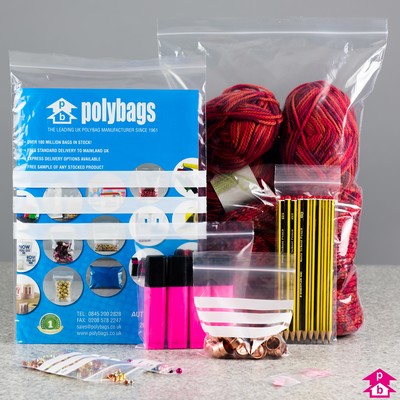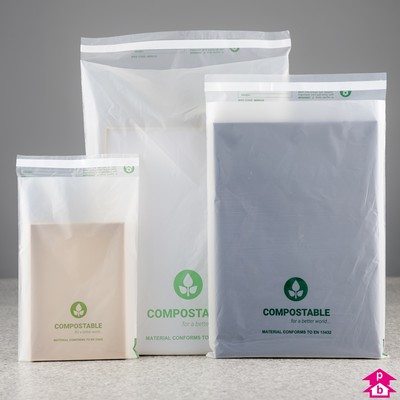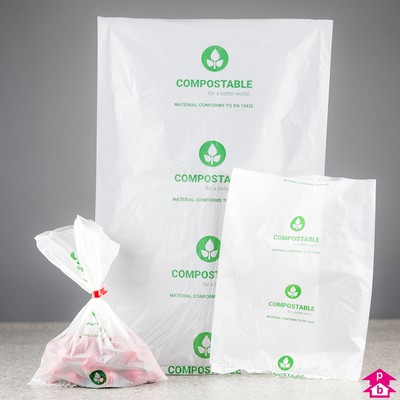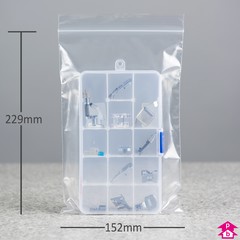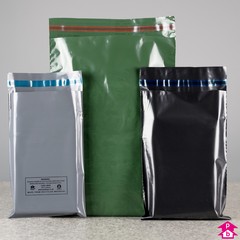- 100% recycled
- Biodegradable
- Carbon neutral
- Compostable
- Recyclable
- Renewable

Compostable packaging
 Polybags' extensive range of compostable packaging is derived from natural, renewable resources to reduce the impact of the packaging on the environment. All of our compostable products are 100% biodegradable and 100% compostable.
Polybags' extensive range of compostable packaging is derived from natural, renewable resources to reduce the impact of the packaging on the environment. All of our compostable products are 100% biodegradable and 100% compostable.
We stock two main types of compostable packaging: an extensive range of bags made from compostable film, and a wide range of compostable food packaging. All of these products are made from renewable resources and offer an eco-friendly alternative to regular polythene products at the end of their product service life.
This page will focus primarily on our products made from compostable film. If you are interested in our range of compostable food packaging, which is made from bagasse - a natural, fibrous byproduct of sugar cane processing - please visit the links below.
 More info on bagasse food packaging
More info on bagasse food packaging
Compostable bags
Our compostable bags are the most eco-friendly packaging that we produce. This renewable packaging is manufactured from sugar cane, potato starch and other renewable resources that can be converted into chemicals and polymers using conversion processes similar to those of traditional polythene.
This ultra-green packaging is designed for industrial composting and conforms to the European compostable standard EN13432, which means that the bags will disintegrate (within 12 weeks) and then biodegrade into carbon dioxide, water and biomass (within six months) in industrial composting conditions. They are also suitable for home composting, although this process will take longer.
You can find out more EN13432, and about Polybags' extensive selection of other eco-friendly packaging, here:
 Related to compostable standard EN13432
Related to compostable standard EN13432
 Related to biodegradable packaging
Related to biodegradable packaging Related to eco-friendly packaging
Related to eco-friendly packaging
 Related to renewable packaging
Related to renewable packaging Related to bio-t packaging
Related to bio-t packaging Buy eco-packaging now
Buy eco-packaging now
What is the shelf life of compostable bags and how do I store them?
 Our compostable bags have a shelf life of 12 months from the date of manufacture as standard, as the compostable polymers used are designed to structurally break down and decompose after this point.
Our compostable bags have a shelf life of 12 months from the date of manufacture as standard, as the compostable polymers used are designed to structurally break down and decompose after this point.
It is important to store compostable bags in a cool, dry place, as exposure to direct heat, sunlight or moisture can reduce its shelf life.
How long do compostable bags take to compost?
Compostable bags requires an active microbial environment, such as a compost heap, to fully degrade. When placed in industrial composting conditions, they will first disintegrate and then biodegrade into carbon dioxide (CO2), water and biomass, leaving no harmful residue behind.
Our range of compostable bags meet the European standard EN13432, which guarantees that the material will disintegrate within 12 weeks and biodegrade within six months in industrial composting conditions. In practice, actual composting times for much of our compostable range are likely to be shorter than this.
The composting process will take longer in domestic composting conditions, as these do not match the high temperatures generated in a controlled industrial composting environment. Times will vary according to composting conditions (e.g. location, size, temperature, moisture, microorganisms).
 Find out more about compostable standard EN13432
Find out more about compostable standard EN13432
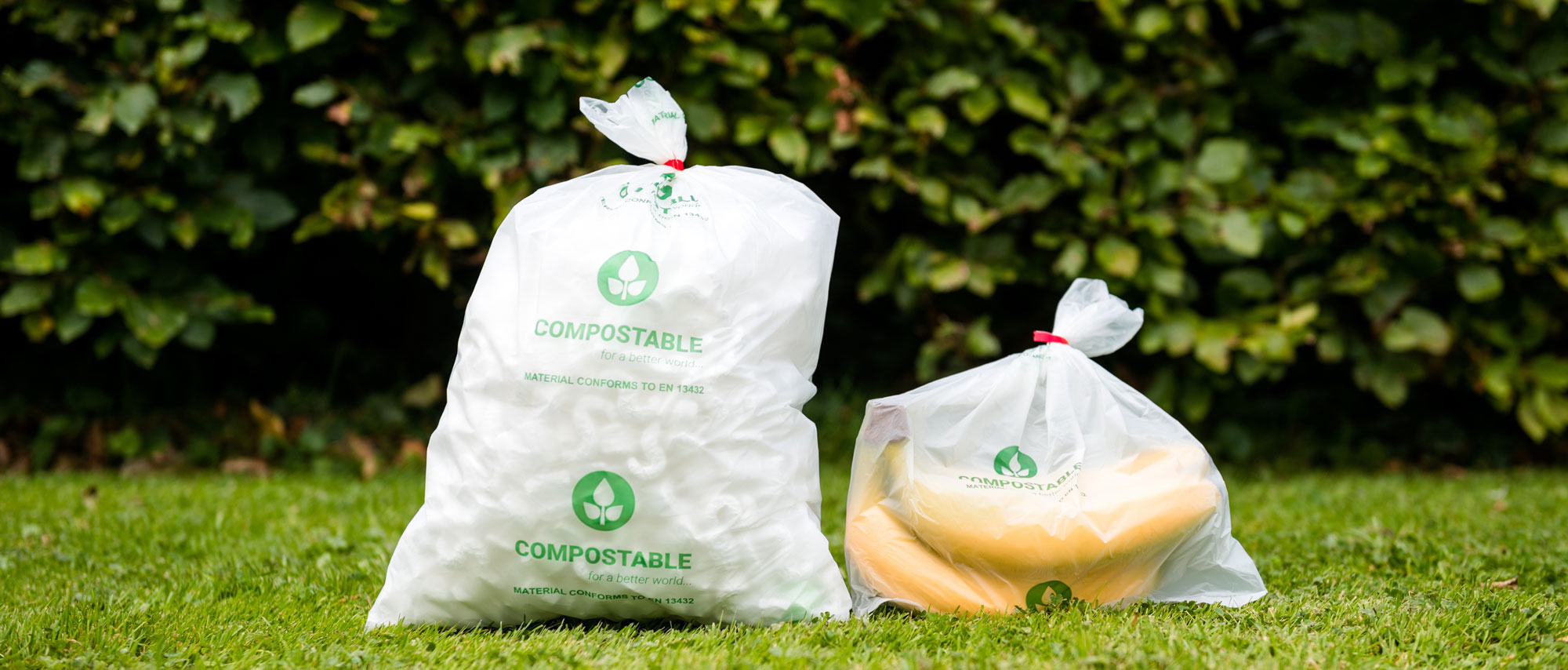
Advantages of compostable bags
- Biodegradable and compostable
- Made from a compostable polymer blend with a minimum 30% renewable content
- Conform to European compostable standard EN13432
- Disintegrate within 10-12 weeks and biodegrades (into carbon dioxide, water and biomass) within six months in industrial composting conditions
- Leave no harmful residue behind in compost
- Free from Genetically-Modified Organisms (GMO)
- Strong and durable - equivalent strength to standard plastic at the same thickness
- Food-use approved
- Soft, gentle feel
- Keeps your kitchen caddy or food bin clean and free from bad bin odours
- Can be thrown into your food waste collection with your food scraps in it (no need to empty out the bag)
Disadvantages of compostable bags
- More expensive than biodegradable polythene bags (regular polythene with additive that accelerates the degradation process)
- Require the correct composting conditions - e.g. temperature, microorganisms, humidity and oxygen - to biodegrade fully
- Whilst compostable bags can be disposed of in a landfill, the biodegradation process takes much longer due to the lack of oxygen and moisture required to break the packaging down
- Shelf life of just 12 months - reduced if exposed to direct heat, sunlight or moisture
FREE DELIVERY

Bio and 100%-recycled mailing bags in low quantity handypacks.


